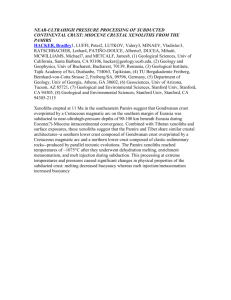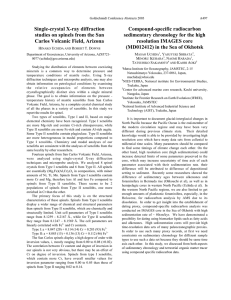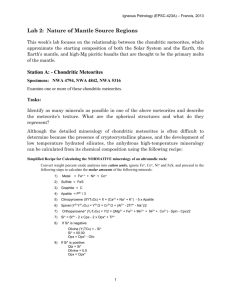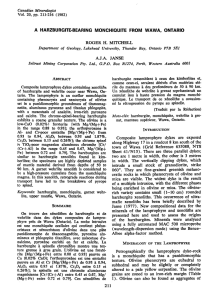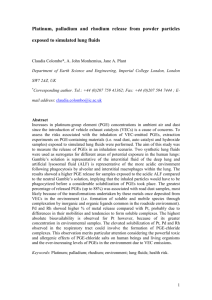PGE abundances in upper mantle xenoliths from the Carpathian
advertisement
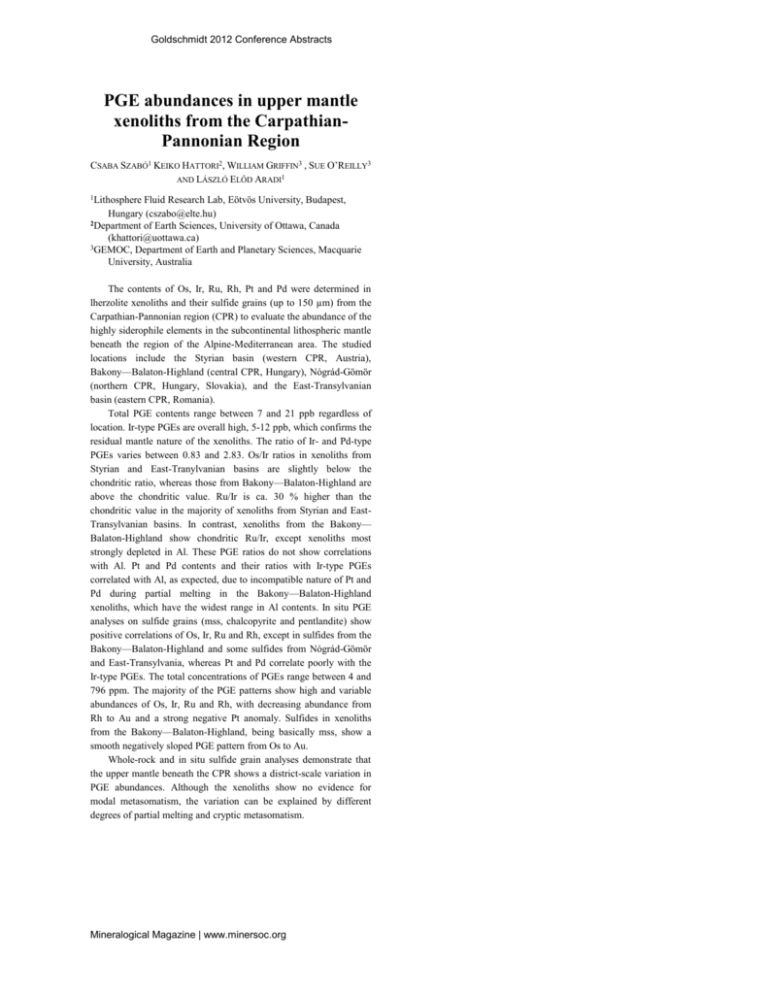
Goldschmidt 2012 Conference Abstracts PGE abundances in upper mantle xenoliths from the CarpathianPannonian Region CSABA SZABÓ1 KEIKO HATTORI2, WILLIAM GRIFFIN3 , SUE O’REILLY3 AND LÁSZLÓ ELŐD ARADI1 1Lithosphere Fluid Research Lab, Eötvös University, Budapest, Hungary (cszabo@elte.hu) 2Department of Earth Sciences, University of Ottawa, Canada (khattori@uottawa.ca) 3GEMOC, Department of Earth and Planetary Sciences, Macquarie University, Australia The contents of Os, Ir, Ru, Rh, Pt and Pd were determined in lherzolite xenoliths and their sulfide grains (up to 150 µm) from the Carpathian-Pannonian region (CPR) to evaluate the abundance of the highly siderophile elements in the subcontinental lithospheric mantle beneath the region of the Alpine-Mediterranean area. The studied locations include the Styrian basin (western CPR, Austria), Bakony—Balaton-Highland (central CPR, Hungary), Nógrád-Gömör (northern CPR, Hungary, Slovakia), and the East-Transylvanian basin (eastern CPR, Romania). Total PGE contents range between 7 and 21 ppb regardless of location. Ir-type PGEs are overall high, 5-12 ppb, which confirms the residual mantle nature of the xenoliths. The ratio of Ir- and Pd-type PGEs varies between 0.83 and 2.83. Os/Ir ratios in xenoliths from Styrian and East-Tranylvanian basins are slightly below the chondritic ratio, whereas those from Bakony—Balaton-Highland are above the chondritic value. Ru/Ir is ca. 30 % higher than the chondritic value in the majority of xenoliths from Styrian and EastTransylvanian basins. In contrast, xenoliths from the Bakony— Balaton-Highland show chondritic Ru/Ir, except xenoliths most strongly depleted in Al. These PGE ratios do not show correlations with Al. Pt and Pd contents and their ratios with Ir-type PGEs correlated with Al, as expected, due to incompatible nature of Pt and Pd during partial melting in the Bakony—Balaton-Highland xenoliths, which have the widest range in Al contents. In situ PGE analyses on sulfide grains (mss, chalcopyrite and pentlandite) show positive correlations of Os, Ir, Ru and Rh, except in sulfides from the Bakony—Balaton-Highland and some sulfides from Nógrád-Gömör and East-Transylvania, whereas Pt and Pd correlate poorly with the Ir-type PGEs. The total concentrations of PGEs range between 4 and 796 ppm. The majority of the PGE patterns show high and variable abundances of Os, Ir, Ru and Rh, with decreasing abundance from Rh to Au and a strong negative Pt anomaly. Sulfides in xenoliths from the Bakony—Balaton-Highland, being basically mss, show a smooth negatively sloped PGE pattern from Os to Au. Whole-rock and in situ sulfide grain analyses demonstrate that the upper mantle beneath the CPR shows a district-scale variation in PGE abundances. Although the xenoliths show no evidence for modal metasomatism, the variation can be explained by different degrees of partial melting and cryptic metasomatism. Mineralogical Magazine | www.minersoc.org
